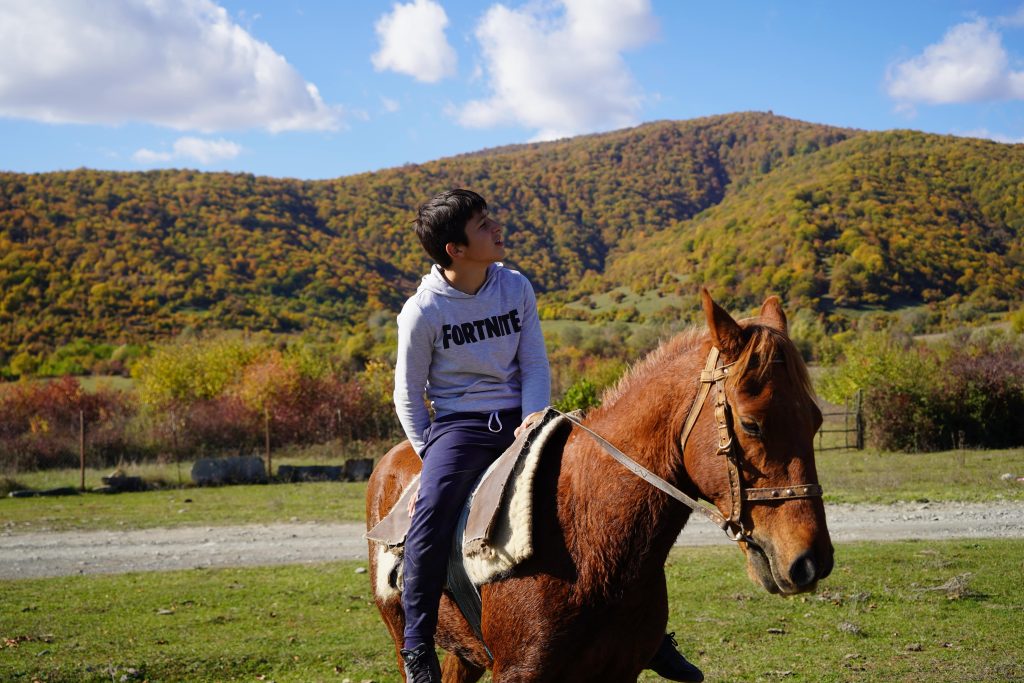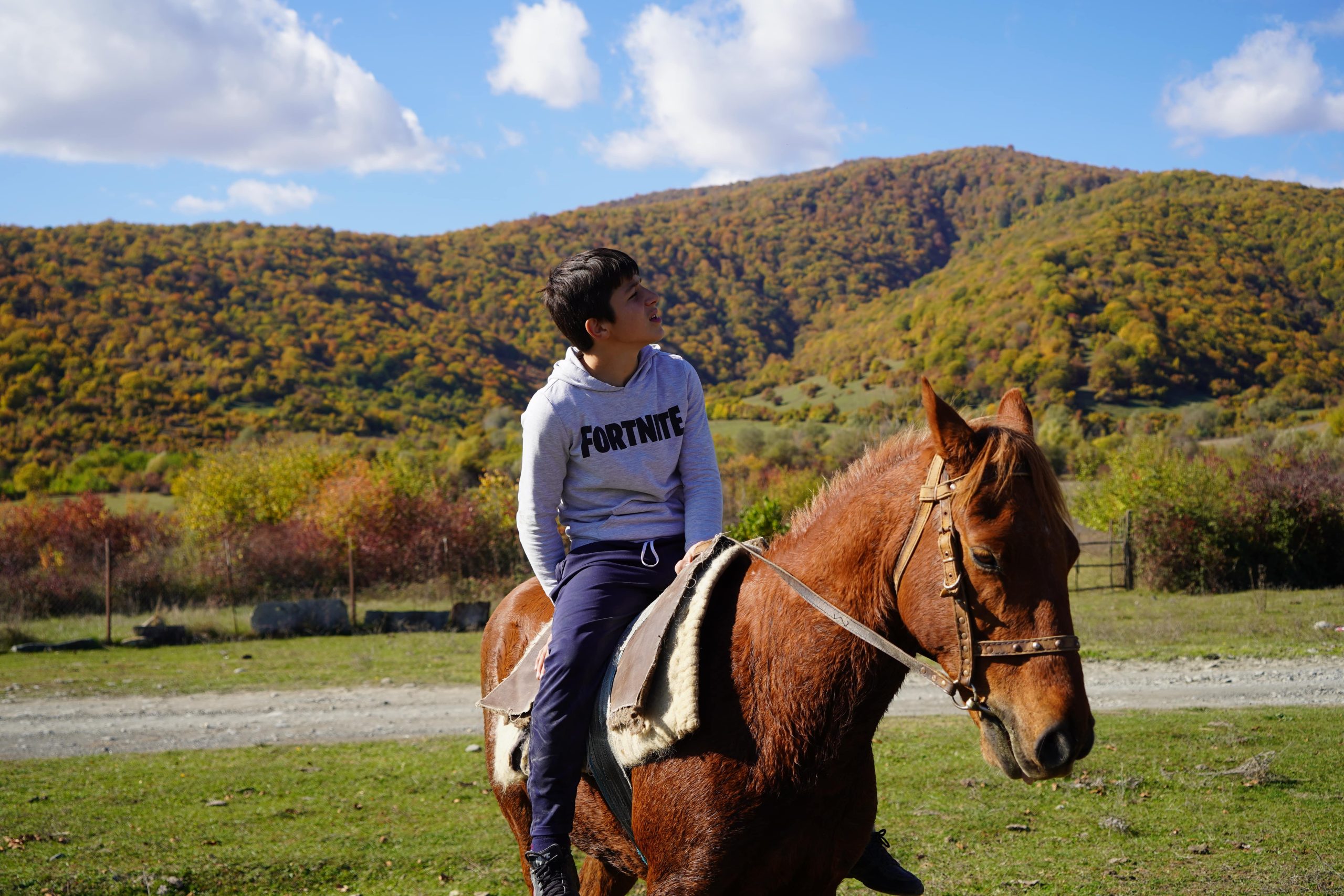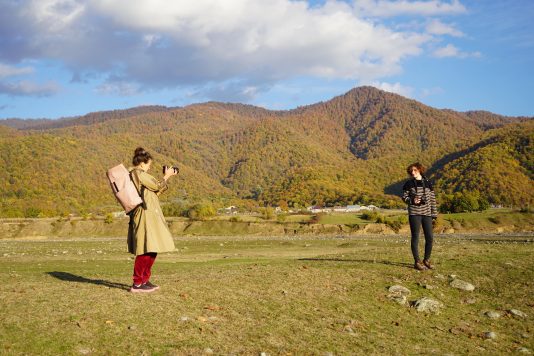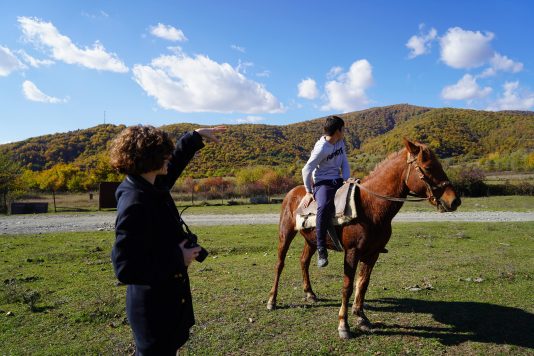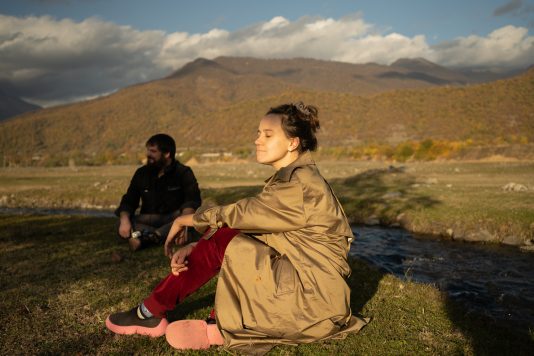Tbilisi Photo Festival (represents the community)
To understand why we chose Pankisi as a destination and Kist people for a community, first, I have to tell you a bit about the Pankisi Valley. Pankisi is located in the extreme East of Georgia, where historically lives the Muslim community of Kists. The Kists represent an ethnic minority group closely related to Chechens, whose religious denomination is Sufism.
Migration of Kists in Georgia started in the middle of 19-th century.For more than a century, they lived side by side with Georgians, slowly assimilating but keeping their traditions and culture at the same time. The situation got tangled in 1994, when Russia first invaded Chechnya and another wave of the migration began. While Kists of Georgia, alongside with other Georgian citizens were ready to accept migrants in their houses, they were not ready for heavily armed so called ‘boeviks’ who entered the Valley blended with other refugees. Soon enough, they took over the Valley and managed to turn it into a criminal hub. Although they were forced to leave Georgia in few years, the damage that they’ve brought to the valley and the reputation of Kist community, has never left.
This is how the invisible wall between the Valley and the rest of the Georgia emerged.
To this day, Pankisi is full of mystery, questions and assumptions for the rest of the Georgians. While many people have little information about Kist community, Russian propaganda works very well to keep the stigma about them going around the country – as it has done in many other cases in Georgia and Caucasus.
I, too, have known about Pankisi my whole life, and for me, too, it has always been distanced, shrouded with the mystic. While working on this project, I had a chance to actually meet the community members: some of the amazing women, who are the leaders of the community, that is something very unusual for Muslims; Children, who are eager to change the old ways of thinking and find new, fresh approaches; Elder people who have seen a lot in their lives and have a lot to tell to younger generations. Almost everyone with whom I spoke, is concerned by that unfair stigma existing in the country about them. Their everyday lives are affected by the attitude that rest of the Georgians have towards them. Although their culture is rich with folklore, traditions and cuisine – a one of a kind merge of Kist and Georgian culture, – they don’t have an ability to share them with the country they live in.
Georgian Kists want everybody to know that they too are Georgians who care about the country as much as the rest of us do. They, too, want peace and serenity in Caucasus, – Mashua Kavkaz (peace in the Caucasus) – as they often say as a goodbye.
Ana Gabelaia, emerging curator
“Magic Carpets” project
Working on this project was an exceptional experience for all participants. The main goal of the residency was to bring artists in the valley to meet the community members, spend time with them and bring the stories about them in Tbilisi. The goal was achieved and the residency resulted in establishing strong and meaningful connections between artists and the different groups representing the local community.
Up tp 600 people attended the final event at Tbilisi Photography and Multimedia Museum. It was a very special day for everyone who attended. 20 people from the Kist community came from Pankisi, including Ali, the main protagonist of Tamar Kalandadze’s (local artist in residency) story; ‘Pankisi Ensemble’ – women choir that Ben Wheeler (international artist in residency) worked with, children, their family members and teachers.
All of us were pleasantly surprised by the amount of attendants and their will to find out more about the Kist community.
The live performance of ‘Pankisi Ensemble’ was a real gem of the day – guests, who have never heard this music before, were touched to the tears by its melodies and characteristics that made the invisible connections between Kist and Georgian culture visible.
It was an evening of emotions, even tears, gratitudes and the promises that this would be the first of many future events, gathering and connecting fellow citizens of different origins, religion, culture and traditions.
Final event of ‘Sounds of the Valley’ became the act of acceptance of each other and a celebration of differences.
‘You have no idea how important it is what you have done here today, you might think you do, but you don’t’ – these were the goodbye words by one of the eldest representatives of the community Bela Mutoshvili, that worth every minute and every drop of energy spent working on the project.
Number of community members included in the project: 30
Reasons for participating in the “Magic Carpets” project: To use the artistic approach of the residents to reach the fellow citizens, to tell them the real stories of the community through artists’ works.
New generation of Kist community is bright, open minded, eager to learn everything that world has to offer, but the thing is, our country doesn’t offer them much. They lack resources and therefore are not able to learn enough. Although there are new start-ups and small, family businesses emerging in the Valley, most of the families can’t find the proper job, there are no enough workplaces for Kists so number of socially unprotected families is high in this region.
Awarded amount will be split in two and will be used to buy piano(s) for local school and a horse for young horsemen of community.
Music, as well as horsemanship is an important part of the community’s culture, tangled with traditions, religion and identity.
‘The music teacher in two of the schools in Pankisi Gorge currently has no access to a piano for her classes. This makes it particularly difficult to teach the music curriculum set out by Georgia’s Ministry of Education, as that material was centered around access to a piano for accompaniment, examples, and basic music education. In order to support and ensure a continued interest in music from the children of Pankisi, access to a piano, be it two upright pianos or a portable electronic one, would help immensely.’ – Ben Wheeler.
‘Ali was 11 years old when the family sold his horse – Lurja. They needed money. There are six of them: Mariam, Muhmad, Amina, Imani, Ali and Aisha. Maiko, Ali’s mother, tells me: ‘We had never seen Ali cry until then. He would no longer eat’. He would no longer speak. His father gave him his word that he would soon buy him a new horse, but he died accidentally and could never keep his promise.
Ali and his friends want to continue the tradition of horsemanship. When you talk to them, you realize that there’s nothing in this world they want to do more. Their relationship with horses is something very special. It is amazing to observe. They often dream of having their own horse and talk about their plans – how they will improve their skills when they have unlimited time to spend with a horse, how they will teach younger kids, prepare them for the rally and create their own, small community of horsemen.’ – Tamar Kalandadze.
Contacts
For further information please contact emerging curator Ana Gabelaia ([email protected])
